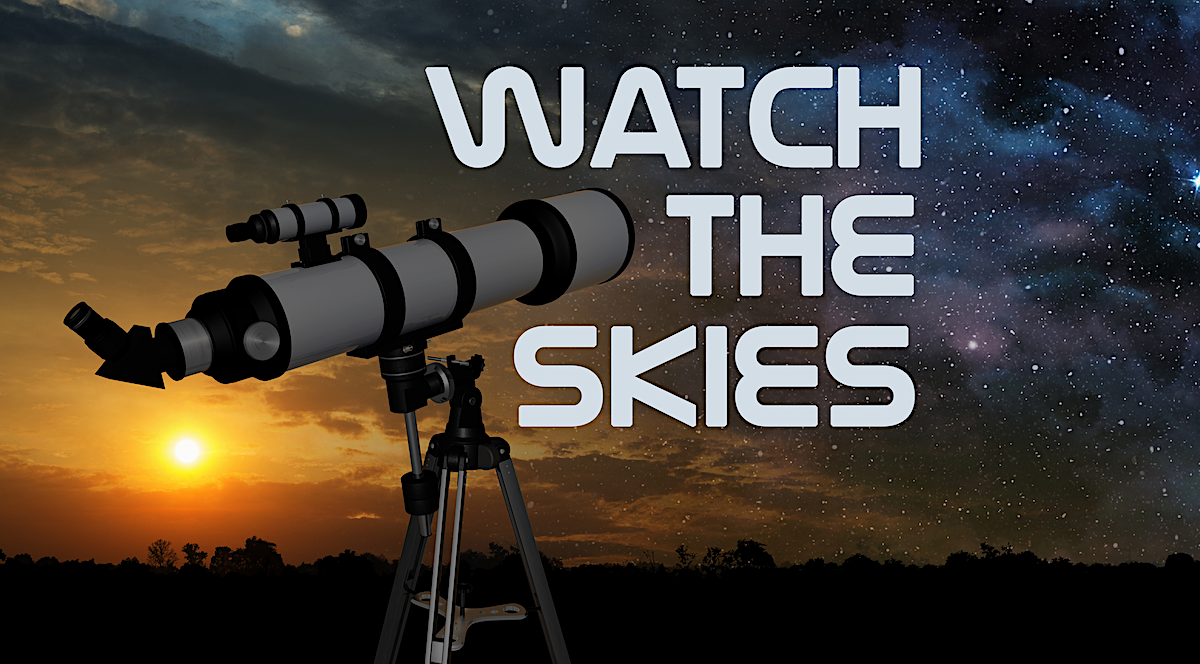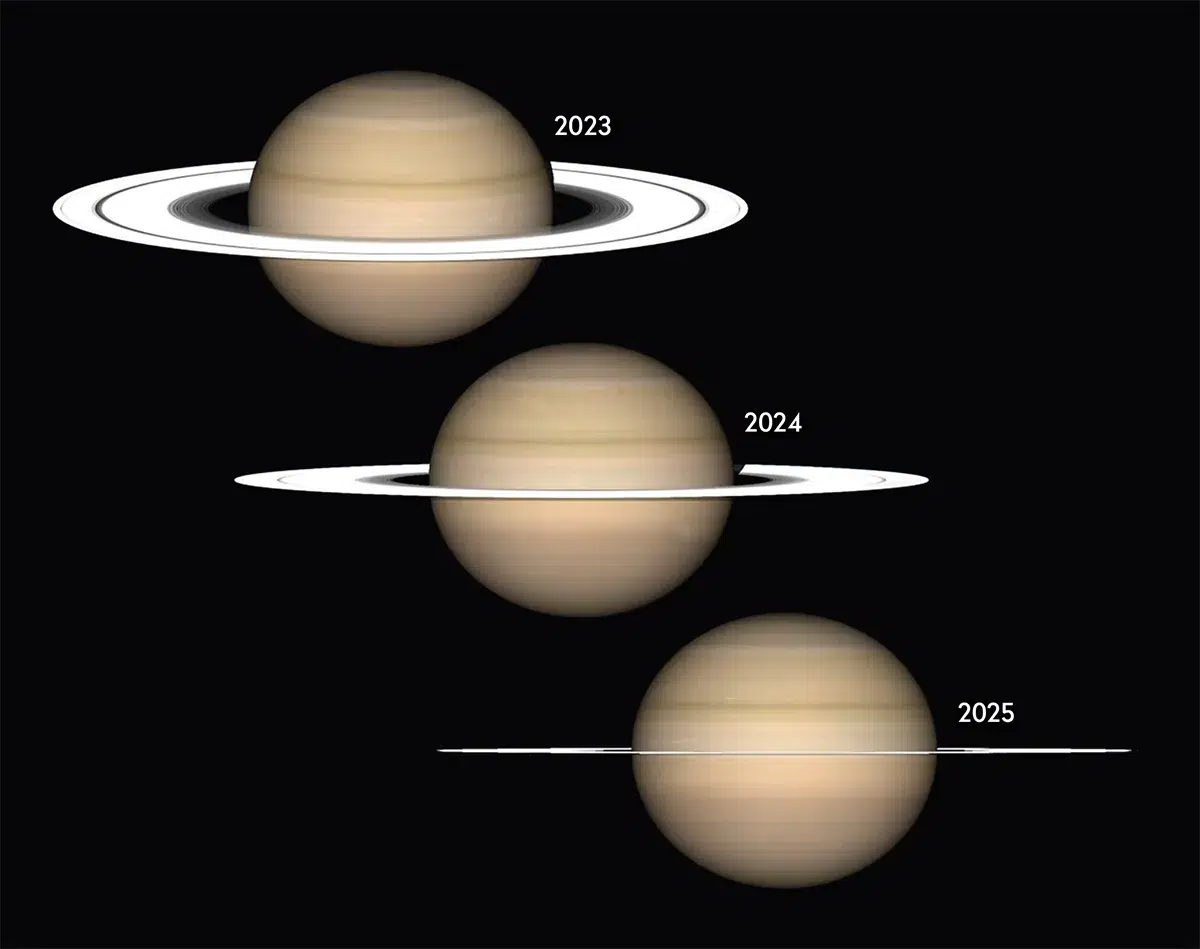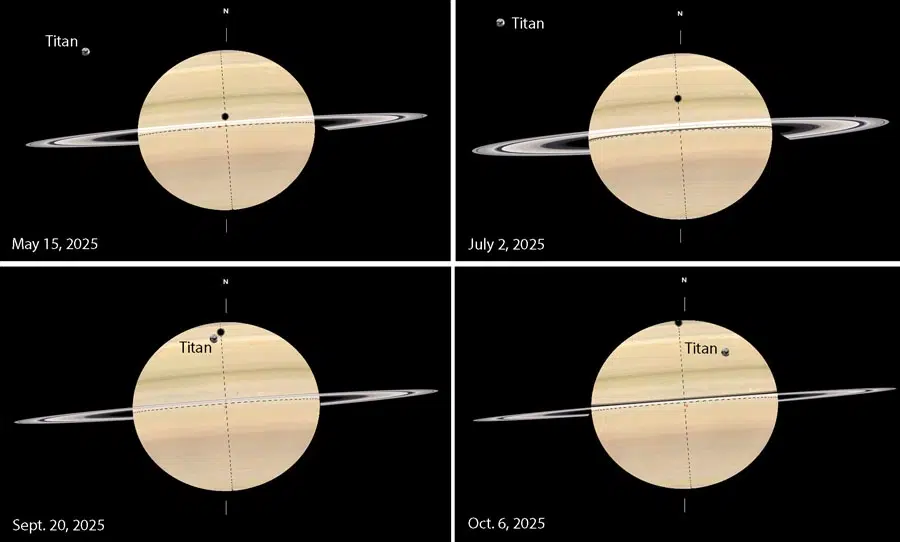
Once every 15 years or so, Saturn and its largest moon Titan put on a grand show for us here on Earth.
The setup for the shadow
Due to Saturn’s slow orbit and its strong tilt, over the course of around 15 years our view of Saturn changes dramatically. Currently we are in what is called a ring-plane crossing. Our view of Saturn is edge on to the rings. Despite their extremely large width of 175,000 miles, the rings are remarkably thin averaging less than 1 mile in thickness. When viewed from edge on they seem to completely disappear.

Source: NASA
Another interesting thing happens when Saturn turns on edge: we get the chance to see a solar eclipse occurring on the planets outer gassy surface.
Solar eclipse on Saturn
When viewed from Saturn, the sun appears about 10 times smaller than it does here on Earth and is about 100 times dimmer. That is still plenty bright enough to light up the planet, but would be very odd for us Earthlings. Because the sun is so much smaller and the planet so much larger, solar eclipses are much more common on Saturn. Pretty much all the significant eclipses are due to Saturn’s largest moon: Titan.
Titan is not only Saturn’s largest moon but the second largest in our solar system, losing out only to Jupiter’s Ganymede. Our own moon comes in 5th place, and is about 50% smaller than Titan. Titan also has an atmosphere made mostly out of nitrogen, methane and hydrogen. Titan’s large size means it produces quite a large shadow when passing in front of the sun. For those with a good size telescope, this shadow can be visible from Earth.
Over the next several months, our edge on view of Saturn will allow these shadows to be seen. You’ll need a fairly good telescope, 8″ or larger for the best results.

These transits have been ongoing since the spring, but the warm nights make late summer a great time to view them.
When and how to look
I suggest downloading a sky app like Sky Safari or Stellarium to gather a full list, but here’s a few of the upcoming transits visible from here in North Georgia. The transits will gradually get shorter over the next couple of months.
August 3rd: 2:25AM-8:04AM
August 19th: 1:52AM-7:00AM
September 4th: 1:25AM-5:50AM
September 20th: 1:09AM-3:34AM
The final transit of this precession will come on October 6th. Saturn’s Rings will gradually tilt back into view over the coming months and be much more visible like you expect to see within the next couple of years.
A decent size telescope is necessary to view these transits: Saturn is very far away and the shadow is small, after all. An 8″ telescope with a 10mm lens should be plenty to catch the shadow with the naked eye, with good atmospheric conditions.
Regardless of whether you can catch the shadow or not, take a minute to point your telescope at Saturn to see a relatively rare view of it without its rings!






